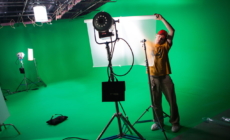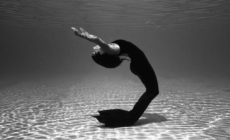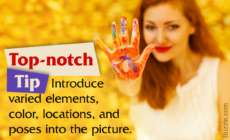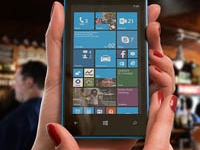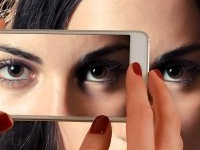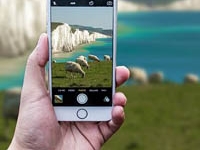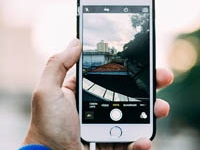-
Cool Picture Effects - September 4, 2018
-
Portrait Photography Tips That’ll Add a WOW Factor to Your Photos - September 3, 2018
-
Photography Tips for Taking Awesome Pics on Your Digital Camera - September 2, 2018
-
Fashion Photographer Salary - September 1, 2018
-
How to Set Up a Quick DIY Photo Booth in No Time - August 31, 2018
-
Do Not Miss These Tips for Shooting Stunning Black and White Photos - August 30, 2018
-
Epic Senior Picture Ideas That’ll Help You Cherish Your Memories - August 29, 2018
-
Incredibly Creative Poses for Family Photos - August 28, 2018
-
Get the Perfect Snap of Your Newborn With These Photography Ideas - August 27, 2018
-
Newborn Photography Poses That Capture the Special Moment Perfectly - August 26, 2018
Make Cash With Your iPhone
Track Wifi Access Points
Navizon is a peer-to-peer “virtual GPS” system that triangulates data collected from users with GPS devices, wifi signals and cell phone towers. In this way, those that do not have GPS systems can still benefit from location-mapping and finding services within the Navizon community. With Navizon, you can find nearby stores and other necessary locations, use its buddy tracker, and getotag items.
And now, Navizon is available for the iPhone via installer.app or iBricker. Alternatively, you can get it directly through the zip file. For those without GPS systems, the service isn’t free. It will cost you $24.95, though you can enjoy a free trial for 15 days before making a final decision. Those with a GPS system can earn cash rewards by letting the Navizon system record wifi and cell phone tower locations through your device. For each wifi access point and tower logged, you earn points, which can eventually be redeemed for cash.
Your iPhone Photos
A number of factors have changed the photography world. The Internet has created a whole new market with a limitless demand for images, even if not everyone actually pays for them, and those who do often have very limited budgets. Microstock, Flickr and a host of other services have broken down the barriers between producers and buyers so that anyone, and not just professionals can offer images to people who might need them. And cameras are everywhere. That’s not just because almost everyone now owns at least a simple point-and-shoot while professional-quality DSLRs are within the reach of even budget-conscious enthusiasts. It’s also because just about every decent mobile phone comes with a camera included.
With estimated sales of more than 10 million units then, the iPhone should be every photopreneur’s most valuable tool: a camera they carry everywhere without even noticing.
With just two megapixels, you might just scrape past iStockPhoto’s 1200 x 1600 pixel minimum but you’re not going to be producing gallery-sized prints from your iPhone. The inability to play with the camera’s settings gives little, if any, control over lighting and, of course, you’re stuck with the iPhone’s tiny lens.
It is possible though to produce interesting pictures with an iPhone. CultofMac recently ran a number of concert pictures shot with an iPhone, some of which went beyond snaps to show some interesting effects. At least eighteen iPhone photos have made it to Flickr’s Explore page.
But it’s still going to be hard to sell an image from an iPhone. Buyers, after all, don’t care whether the image was shot with a top-of-the-range Hasselblad or through a pin-hole camera. They only care about the result. Getting a good result from an iPhone will always be a challenge and telling the buyer that the picture might be grainy but it was shot with a very cool mobile phone is unlikely to close the deal.
But does that mean it’s impossible to sell a picture from an iPhone?
We haven’t come across anyone who’s actually done it but we do wonder what it might take.
Exclusive access could be one requirement. InStyle’s account of New York Fashion Week in February 2008 featured a number of behind-the-scenes images of reporter Katrina Szish interviewing leading designers. Those images were shot on an iPhone by Michael Hopkins and were presumably included in the report because InStyle didn’t have anything else they could use.
When the subject is hard to come by, and there’s a demand for it, there’s always an opportunity to make a sale. Matt Pagel, for example, put his photograph of the new de Young museum in San Francisco on Flickr after he was one of the first people to gain access to the building. The interest in his picture led to the photo being printed in Icon magazine and later sold as a print.
Matt’s picture wasn’t shot on an iPhone but if you have an one, it’s always with you. That means you’ve always got a chance to take pictures of events and subjects that other people miss, and might want.
Contests can be another way of making your iPhone pictures pay, although they have to be pretty specialized. The annual iPhone Photography Awards, launched last year, promised a 20 inch iMac to the winning entry. In the end, the winner apparently received an iPod Touch instead, and this year, the first three winners “will be publicized on IPPA online gallery and published in the IPPA Annual Book.” That’s not going to make anyone rich.
Kelby Training, on the other hand, creators of the iPhone Book, did a little better with a $500 Apple Store card as the first prize in their iPhone photography contest. The winner was free to exchange it for a $100 iTunes Gift Card and a copy of Kelby’s book.
Interestingly, while some of the winning entries were as head-scratching snappy as you might expect from a two megapixel mobile phone, the best in the show was as good as anything a better grade of camera might produce and underlined the old adage that good cameras don’t shoot good pictures, good photographers do.
And that might be the third way you can turn your iPhone into a photography money-making machine: make use of the phone’s strengths and weaknesses to create atmospheric pictures. You can sell them as a postcard, concert photos etc. The inability of iPhone users then to control shutter speed and aperture might mean that while the camera’s range is limited, shoot a light source at night and you’ll create one particular type of effect. If you can find a market for that effect, whether it’s on Zazzle or Cafepress products, postcards or even iPhone wallpaper, you might be able to turn a shot made on the spur of the moment into revenue. That could be especially true if you’re also a whiz with Photoshop.
Use the iPhone to take opportunistic pictures, regard any specialized contests as a challenge and a chance to be a winner, and focus on the camera’s strengths rather than its limitations, you might just be able to find the occasional buyer for the result.





